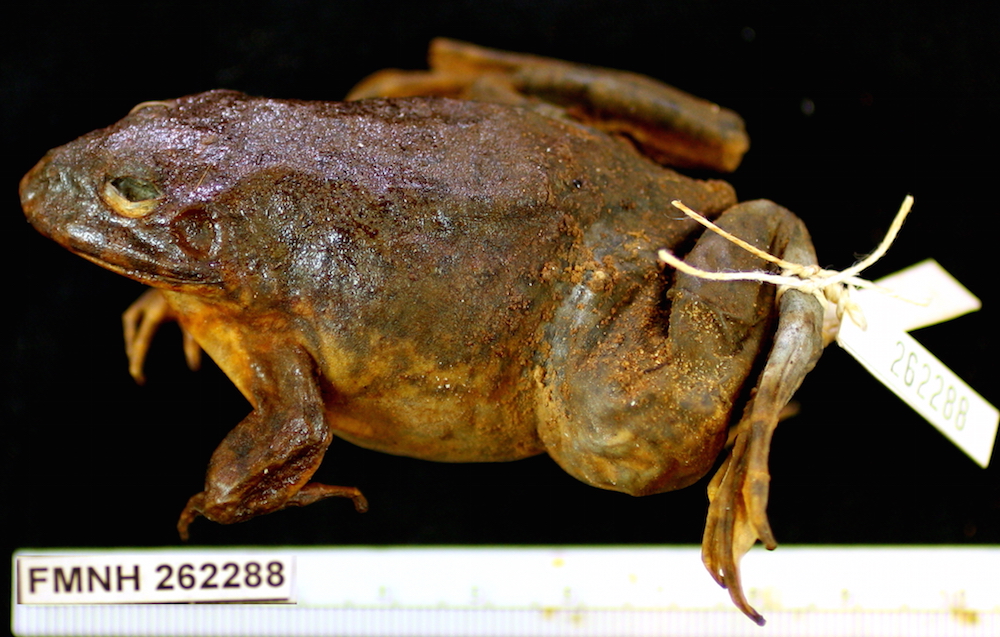Cold-Blooded Mummy: How India's Hot Weather Preserved a Reptile

A thirsty chameleon that perished during its desperate search for water may no longer be of this world, but its mummy — naturally preserved by India's hot, tropical climate — has intrigued people the world over.
That includes those who think it's a hoax.
The Indian chameleon (Chamaeleo zeylanicus) was likely looking for water from an old pipe that had been dry for years, said filmmaker and writer Janaki Lenin, who found the critter and posted photos of it on Twitter. The animal was still clutching the pipe, even in death. [Photos: 11 Colorful Chameleons of Madagascar]
"The tragic story of a chameleon," Lenin tweeted June 18. "He must have remembered drinking water from this pipe a couple of years ago. But we had disconnected it." (Lenin removed the tweet yesterday, June 21.)
However, not everyone is convinced by this turn of events. It's strange that the dead chameleon was gripping the water pipe, said Christopher Raxworthy, the curator-in-charge of the Department of Herpetology at the American Museum of Natural History in New York City.
Chameleons that are dehydrated or weak lose their ability to grip and climb, and drop to the ground when they're close to death, Raxworthy told Live Science in an email. "I suspect someone put the dry chameleon on the pump as a joke, or to stage this," Raxworthy said.
But Lenin defended her story.
Sign up for the Live Science daily newsletter now
Get the world’s most fascinating discoveries delivered straight to your inbox.
"My family lives on a private farm with no access to outsiders," Lenin told Live Science in an email. "None of the locals will touch chameleons, because they think they are venomous. Also, my husband is a well-known herpetologist and has seen his fair share of pranks, [too many] to be fooled by one."
Mummy mystery
If Lenin's story is legit, then it's likely that the intense sunlight and dry heat hastened the mummification of the chameleon, said Alan Resetar, manager of the Amphibian and Reptile Collections at the Field Museum of Natural History in Chicago, who was not involved with the chameleon finding.
"The dry wind, too, would desiccate — would pull the moisture out of the animal fairly quickly," Resetar told Live Science.
During her examination of the mummy, Lenin noticed two small holes in its skin, she said. These were likely caused by ants that ate the chameleon's organs, probably speeding up the mummification process, according to National Geographic.
The moment an organism dies, the bacteria that live in the creature's gut turn against it, accelerating decay by gulping down its soft tissues. That's why some ancient cultures eviscerated dead people (removed their organs) so that the individuals could more easily be mummified, Live Science reported previously.
The ants might have similarly eviscerated the chameleon, but only a necropsy (an animal autopsy) or a medical-imaging scan could tell for sure, Resetar said.
Still, animals and humans that retain their organs can be mummified if it's hot and dry enough. In 2003, an African crowned bullfrog (Hoplobatrachus occipitalis) found in Niger near a dried-out pond was naturally mummified with all its organs intact, Resetar said.

Moreover, he recalled an odd experience with mummies while he was working for a trucking company one summer during college. One day, Resetar was asked to check on a truck in the back lot that had been sitting there for months, if not years, he said.
"I opened it up, and there was a litter of mummified kittens inside the truck," Resetar said. "The mother must have escaped or been away when the truck door was closed, trapping the kittens."
The intense heat inside the truck's cab — "it was like a furnace," Resetar said — likely played a role in the kittens' deaths, and facilitated their mummification, he said.
"It was sad," Resetar said. "The thought still stays with me, and that was 40 years ago."
While finding naturally mummified animals is not an everyday occurrence, experiencing high temperatures is becoming more common as climate change heats up parts of the world. Higher-than-usual temperatures can kill animals, especially those that are ectotherms, or cold-blooded, according to National Geographic.
"A lot of these reptiles who live in the desert or tropics, they're in areas that are already almost as hot as they [the animals] can survive, so even a small increase in temperature beyond that could push them into pretty severe heat stress," Jeanine Refsnider, a herpetologist at the University of Toledo in Ohio, told National Geographic.
Original article on Live Science.

Laura is the archaeology and Life's Little Mysteries editor at Live Science. She also reports on general science, including paleontology. Her work has appeared in The New York Times, Scholastic, Popular Science and Spectrum, a site on autism research. She has won multiple awards from the Society of Professional Journalists and the Washington Newspaper Publishers Association for her reporting at a weekly newspaper near Seattle. Laura holds a bachelor's degree in English literature and psychology from Washington University in St. Louis and a master's degree in science writing from NYU.









